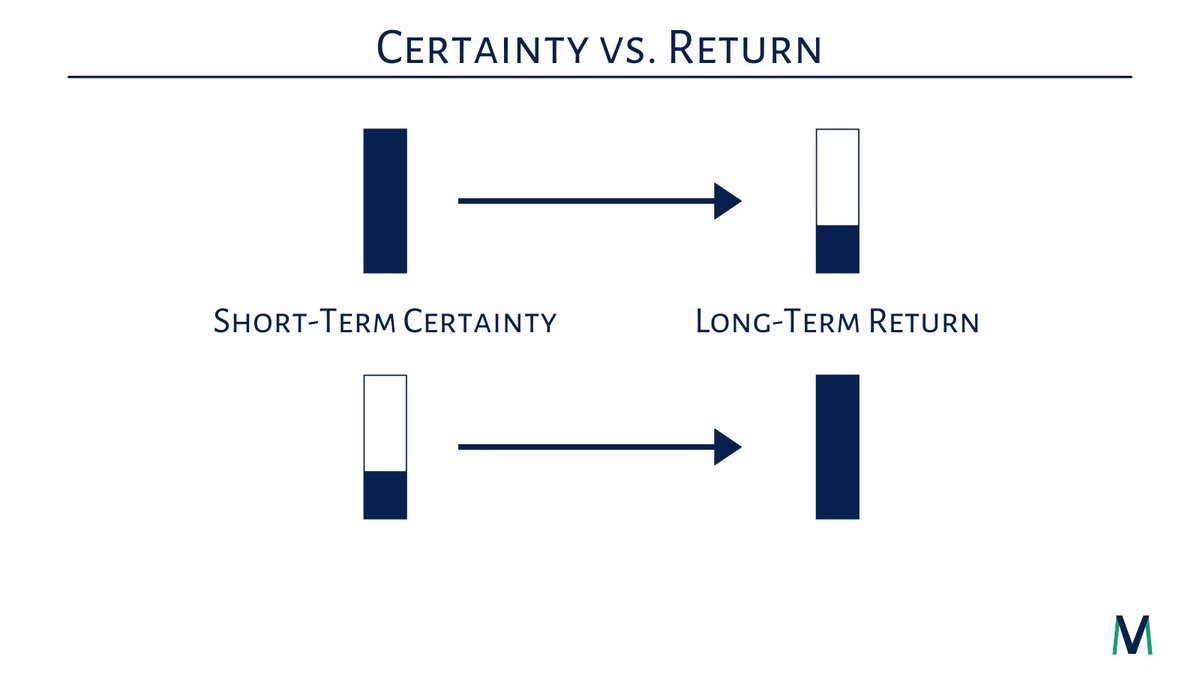Given the passage in both the House and Senate of the Tax Cuts and Jobs Act, the stakes for year-end tax planning are higher than usual. We do not know what final legislation will look like when it comes out of reconciliation but there are themes in the House and Senate tax bills that give us insight into beneficial tax moves to make prior to year-end. We’ve highlighted some of the proposed changes and related planning opportunities to consider.
Deductions
Both the House and Senate plans agree on increasing the standard deduction amount, nearly doubling the current allowance:
|
|
Current (2018) |
House |
Senate |
|
Single |
$6,500 |
$12,200 |
$12,000 |
|
Married |
$13,000 |
$24,400 |
$24,000 |
|
Head of Household |
$9,550 |
$18,300 |
$18,000 |
On the flip side, the proposed legislation makes significant changes to expenses that are allowed as itemized deductions. Some notable changes include:
- Medical expense deduction – the House bill eliminates the deduction completely while the Senate bill keeps the deduction in-place with a lower floor (7.5% of AGI as opposed to 10% currently) in 2017 and 2018.
- Mortgage interest – the House bill limits mortgage interest deduction to the first $500k whereas the Senate bill keeps the deduction for home acquisition debt, but eliminates deductions for home equity debt.
- State and local taxes – both bills would eliminate the deduction for state and local income taxes paid – a huge component for many who itemize deductions.
- Real estate taxes – both bills propose capping the deduction for real estate taxes paid at $10k.
- Other itemized deductions – both bills would eliminate all other itemized deductions. Casualty and theft losses, unreimbursed employee expenses, home office expenses, tax preparation fees, investment management fees paid from taxable accounts, gambling losses, and more would no longer yield a tax benefit.
What it means: The increased standard deduction is not as generous as it seems – both bills eliminate the ‘additional’ deduction for those who are over 65, blind, or disabled, and they also terminate the personal exemption ($4,050 per person in 2017, although subject to phase-outs for high earners).
What to do: Take some time to review your Schedule A from 2015 and 2016 tax returns. Subtract some of the deductions on the chopping block that you have benefitted from in the past – where does that leave you? If you expect your itemized deductions to be lower than the proposed standard deduction in most years, then aggressively accelerate deductions.
- Frontload charitable contributions using a Donor Advised Fund (becomes particularly important with proposed FIFO rules detailed below…)
- Prepay state income taxes to get one last deduction in 2017
- Prepay real estate and property taxes to the extent possible, especially if your annual real estate taxes are more than $10k
- Accelerate medical expenses and unreimbursed business expenses
- Consider bumping up the timeline for that home purchase if you plan on a obtaining a mortgage in excess of $500k so you are grandfathered into the current rules in the event mortgage interest limits stated in the House version are ratified
First-In, First-Out
A current proposal in the Senate’s version of the tax overhaul that has been overlooked by many is the implication of mandating “first-in, first-out” (FIFO) selling for taxable brokerage accounts. Currently, individuals with taxable accounts can ‘cherry pick’ in selecting specific tax lots to sell or dispose of – this allows investors to minimize their taxable gains when transacting shares. However, FIFO treatment would force investors to sell their oldest shares first which will in-turn increase the taxable gains realized for many.
What it means: This change would have an immense impact on the ability to make strategic tax moves in the context of an investment portfolio and will leave many portfolio managers scratching their heads. It is particularly important for those with large legacy positions in taxable accounts and other concentrated stock positions (especially those accumulating stock by participating in company equity incentive plans).
What to do: Work with your advisor to comb through individual lots in your taxable brokerage accounts to identify ‘hidden value’ in the event this proposal finds its way into the final bill. Tax loss harvesting specific lots becomes extremely important in 2017 as does selecting the right tax lots to contribute to a Donor Advised Fund or charity. Do not overlook this opportunity!
AMT
The House bill repeals the Alternative Minimum Tax (AMT) while the Senate retains the AMT but makes changes such as increasing the exemption amount.
What it means: The AMT is a separate system and calculation that operates parallel to the regular income tax system. It was initially put in place to ensure those who have large itemized deductions are paying their fair share in taxes; however, the AMT was never indexed for inflation which means that more and more taxpayers are exposed to the tax.
What to do: There are certain tax moves that impact your AMT liability, most notable is an exercise of Incentive Stock Options (ISOs). If you are considering an ISO option exercise it may be worth pushing this tax event to 2018.
Pass-Throughs
Among the biggest winners in the proposed tax legislation are those with ownership in pass-through entities such as a sole proprietorship, S-Corporations, LLCs, Partnerships. A pass-through entity is a vehicle that ‘passes’ taxable income to the individual tax rates of the owners, rather than being taxed at the entity level (like a corporation). To put it simply, the House bill proposes a reduced maximum tax rate of 25% (currently subject to 39.6% at individual tax rates) but there are restrictions in what you must take as wages (pay individual tax rates) vs. treat as business income (eligible for lower rate of 25%). The Senate bill would continue to tax pass-through income at individual tax rates but would allow a 23% deduction for pass-through income.
What it means: ‘Smaller businesses’ who operate as a pass-through entity will benefit from lower tax rates on their business income.
What to do: Now is the perfect time to be evaluating what entity makes the most sense for you – think about the current vehicles you have in-place and work with your advisory team to ensure you are positioned to benefit from this proposed change. There are certain businesses that may not benefit from the reduced rate (mainly professional service providers, like doctors, lawyers, accountants, consultants, etc.). Given the proposed changes, it will likely be beneficial to push cash receipts to 2018 wherever possible and to accelerate deductions for the business in 2017. Push income to 2018 and hope to benefit from lower rates.
Rate Changes
The House plan proposes consolidating the current seven tax brackets into four, while the Senate plan retains the seven brackets but reduces the rates. It is also interesting to note that, while the House bill makes most provisions permanent in their proposal while many of the provisions applying to individual taxpayers in the Senate bill would ‘sunset’ (expire) at the end of 2025. This essentially means that under the Senate bill the laws would revert to the way they are written now beginning in 2026.


What it means: Many – but not all – will pay a lower rate under the proposed changes.
What to do: Defer income, accelerate deductions. Defer payments, such as bonuses and other receivables, to 2018 wherever possible. Take advantage of any opportunity to harvest capital losses from taxable accounts (as this may be your last chance to cherry pick tax lots!). Maximize your pre-tax deferrals into retirement plans, deferred compensation plans, and Health Savings Accounts.
Other Proposed Changes to Monitor
- Sale of principal residence exclusion – currently, everyone who sells a principal residence may exclude up to $250k of the gain from their income ($500k if married filing joint). The catch is that you must have lived in the home and treated it as your primary residence for at least two of the last five years and can only do this tax move once every two years. Both proposals would change the holding period requirement to five out of eight years and would limit the amount this exclusion can be used to one sale every five years. The House bill is more aggressive in that it proposes a phaseout for the exclusion based on income.
- Electric vehicle credit – a credit for plug-in electric vehicles up to $7,500 is available under current tax law. If you are considering a purchase of an electric vehicle, it may be worth expediting to 2017 to ensure you get the credit. However, don’t make a hasty decision to buy a car strictly for the tax benefit.
- 529 Plans – the proposed plans extend the flexibility of 529 Plans, making these vehicles even more beneficial. Under current rules, 529 funds can only be expended for qualified post-secondary education costs and can only be set-up once the child is born. The House proposal would allow parents to set-up plans for unborn children and would allow up to $10k of expenses per year for private elementary and secondary school expenses. The Senate proposal would allow expenses for public, private and religious elementary and secondary schools, and home school students. These changes would drastically reduce, and perhaps eliminate, the benefit of Coverdell ESAs.
- Estate Taxes – both proposals retain, but make changes to, the estate tax. Under the House bill, the exemption would increase to $10M (currently $5.49M per person) indexed for inflation with a full repeal after six years. On the other hand, the Senate bill would double the estate tax exemption with no repeal in site. In either case, there has been no mention of the gift tax which is a crucial element of wealth transfer – this is something to monitor closely as it could have major planning implications.













